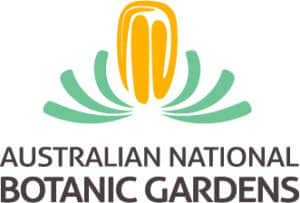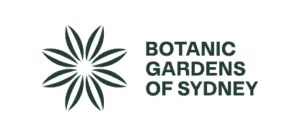
APCC14 Program
Download the conference program here:
Sunday 13 October: Early registration and Welcome Reception at the venue from 4-7pm.
Monday 14 – Wednesday 16 October: Conference sessions (welcome, opening address, presentations, posters and workshops*)
Tuesday 15 October: Conference Dinner**
Thursday 17 October: Field trips***:
- Field Trip 1 (full day) – Wildflowers of the Granite Belt with Stanthorpe Rare Wildflower Consortium
- Field Trip 2 (full day) – Bunya Mountains Experience with Bunya Peoples’ Aboriginal Corporation (BPAC) and Darling Downs Grasslands.
- Field Trip 3 (half day) – Gummingurru Aboriginal historical site and Peacehaven Botanic Park.
*Workshops
There were 2 sessions of concurrent workshops on the following themes:
Session 1 (Tuesday 15 October):
- Ex-situ conservation threatened plants through metacollections.
- How to undertake threatened flora surveys.
- Emerging minimum data requirements for environmental markets and mandatory climate and nature reporting (e.g. Nature Repair Market, Land Restoration Fund) to prove conservation benefits to threatened species.
Session 2 (Wednesday 16 October:
- How to raise political and community awareness of threatened plants and the actions required to save them.
- Harnessing the power of citizen science for plant conservation.
**Conference Dinner
The Conference Dinner was held on 15 October at Queensland Museum Cobb+Co.
This event was supported by Alcoa and Cobb+Co.
Speaker was Hugh Possingham on “Making Smart Conservation Decisions“.
Photos from the evening can be seen on our Facebook page here.
Museum exhibits included this exciting botanical art exhibition:
Ellis Rowan: Colonialism and Nature Painting
Step into the captivating world of Ellis Rowan, a trailblazing 19th-century Australian botanical artist whose breathtaking watercolours and solo expeditions pushed the boundaries of art and exploration. This exhibition highlights Rowan’s remarkable travels from 1880 to 1910, taking you on a journey from Rockhampton to the Torres Strait and Papua New Guinea, through extraordinary paintings, sketches, diary entries, and photographs. Experience the beauty and detail of Rowan’s work through 28 original watercolour paintings depicting plants and flowers, paired with objects from the Queensland Museum Collection that explore how First Nations peoples used these plants in everyday life. The selection of artworks and objects invites viewers to consider Rowan’s encounters with First Nations people, Country, and Culture, and the circumstances that enabled her extensive body of work.
***Field Trips
1/ Wildflowers of the Granite Belt with Stanthorpe Rare Wildflower Consortium 

Phebalium whitei – Paul Donatiu
We departed Toowoomba for Girraween National Park located on the Granite Belt near the Qld/NSW border and south of Toowoomba. Girraween, meaning ‘place of flowers’, is a park of massive granite outcrops, tors and precariously balanced boulders with spectacular wildflower displays in spring. Golden wattles, yellow, red and purple pea flowers, dainty orchids and flannel flowers grow amid forests of red-gum, stringybark and blackbutt.
We arrived and meet volunteers from the Stanthorpe Rare Wildflower Consortium at the Day Use area, a short distance from the National Park Visitor Centre. They took us on a guided botanical walk along the Junction Track (5.2km return) to view the many wildflowers there including Allocasuarina rupicola (Near Threatened) and Phebalium whitei (Vulnerable). Lunch was in the Park during the walk. We then returned to the Visitor Centre for the bus trip back to Toowoomba.
Local wildflower books were for sale including the Consortium’s Wildflowers of the Granite Belt for $5 which has photos of 280 of the most common local species.

Bunya Mountains by ZaqqyJam – Wikimedia commons, CC BY-SA 4.0, https://commons.wikimedia.org/w/index.php?curid=59176114
2/ The plants of the Bunya Mountains and Darling Downs grasslands.
We departed Toowoomba for a 2 hr bus trip to the Bunya Mountains, which rise over 1000 metres above the plains, harbour ancient rainforests and Bunya Pines (Araucaria bidwillii), and have been a gathering place for people for millennia. We experienced the Bunya Mountains with the Bunya Peoples’ Aboriginal Corporation (BPAC) who discussed the Bunya Pine’s significance, and heard about traditional land management practices in the grasslands using fire. From there we walked to the Bush Uni, yarned about “Connection to Country”, “Why are our Elders important?” and “Why should we honour our Ancestors?”
We then took a rainforest walk with BPAC Rangers who discussed some of the ways they have existed with nature and how plants were used in daily life.
On the way home, we travelled past the vast grasslands that once covered the Darling Downs. Growing on fertile clay soils, these grasslands have been extensively cropped and only 1% of their original extent remains. They harbour a diversity of plant life with over 300 plant species recorded including many that are rare and threatened. This area harbors Australia’s only native thistle the Vulnerable Austral Cornflower (Rhaponticum australe) and we discussed the myriad issues facing these tiny grassland remnants and how research and management is contributing to their conservation.
3/ Gummingurru Aboriginal historical site and Peacehaven Botanic Park (8.30am to 1:30pm)

Gummingurru stone arrangement – photo: Toowoomba Council
We toured Peacehaven Botanic Park and heard from Paul Carmody about the significance of the area to local First Nations People. Friends of Peacehaven Botanic Park also had their local native plant nursery open for browsing. The park is set in the leafy suburb of Highfields, 15 minutes drive north of the Toowoomba CBD and includes a diverse collection of Australian native flora and other attractive botanic specimens, including rare and endangered plants. Many of the plants in the grounds are labelled for visitor information.
Directly to the west is Gummingurru where Paul continued to take us on a guided site tour to learn about the stone arrangement cultural complex located there. He described and discussed the site’s significance including subjects such as: skin and kinship; lore and law; obligation, roles, and responsibility; belief systems; and conservation. Traditional land management practices, plant use (medicinal, tucker and cultural) and the eco-systems were then explored. We saw the progress of three demonstration gardens established to showcase species from different culturally important ecosystems including endangered semi-evergreen vine thicket.

Gold

















